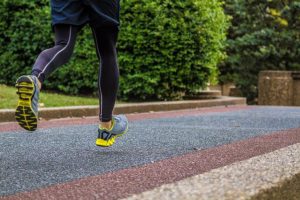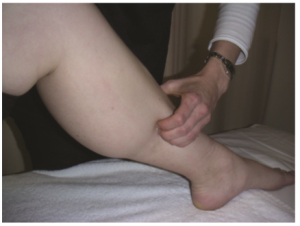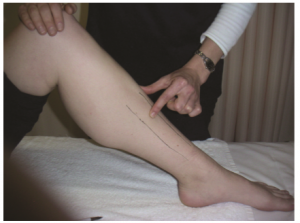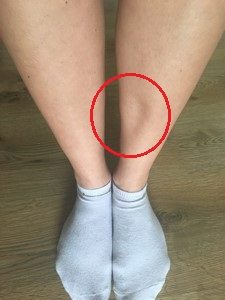
As we’re just about to tick over into summer, you may have been looking to return to those warmer early morning or late evening runs! So we thought we would help you out and give you a couple of quick and easy tests to help avoid one of the most common injuries – shin splints, or medically referred to as medial tibial stress syndrome.
A recent study of military recruits (Newman, 2012) looked over 5 years worth of data and subsequently have shown that if you’re positive for both these tests, you could be almost 8 times more likely to develop the condition. On the contrary, if you’re negative for both these two tests, you’re unlikely to have any problems (LR- >0.001)
Test #1 Shin Palpation
Instructions:
1) Press down on the shin bone, two thirds down and on the inside, including all muscles on both your left and right leg!
2) Press enough to squeeze out a wet sponge!
Positive test is recorded if there is any pain present
Test #2 Shin Oedema Test
Instructions:
1) Press and hold down for FIVE SECONDS on the shin bone, two thirds down and on the inside.
Positive test is recorded if there is pitting oedema (a dent lasting on your shin!)
Here is what else you need to know!
1) Common symptoms involve:
– Dull, aching pain on the front and inside of the shin
– Tender to touch shin bone
2) Depending on the severity of your shin splints, symptoms may occur:
– Only during the warm-up
– Only during the warm up and the cool down components
– During the warm-up and continues to get worse
– All the time, disturbing sleep
3) Some of the common risk factors to shin splints include the following:
– Increasing running speed or distance
– Running on hard or angled surfaces
– Flat feet (excessive pronation)
– Inappropriate footwear/fatigue
– Lack of ankle mobility (tight calf) or tight hamstrings
– Poor gluteal or intrinsic foot muscle strength / control
4) Females are more likely to develop the syndrome (up to 3x!) (Burne et al., 2004)
5) Healing time can take a while, up to 6 weeks, but this is dependent on the severity.
6) Untreated shin splints with persistent overuse can increase risk of stress fracture, meaning that we’ll be needing to find you other alternatives to exercise!
Treatment for shin splints covers six main phases here at Central Performance including correct diagnosis, symptom control, addressing background biomechanical factors, tissue lengthening, tissue strengthening and advanced sport specific strengthening prior to your complete return to pre-injury level!
 Ben Liddy is Head of Running Performance at Central Performance. As well as competing at an elite level he is a Certified Level 4 Middle and Long Distance Athletics Coach, a current Athletics Australia coach, and a Masters-qualified physiotherapist with years of experience in treating running injuries. If you have any questions about running training or injury management please feel free to contact Ben on Ben@centralperformance.com.au .
Ben Liddy is Head of Running Performance at Central Performance. As well as competing at an elite level he is a Certified Level 4 Middle and Long Distance Athletics Coach, a current Athletics Australia coach, and a Masters-qualified physiotherapist with years of experience in treating running injuries. If you have any questions about running training or injury management please feel free to contact Ben on Ben@centralperformance.com.au .

